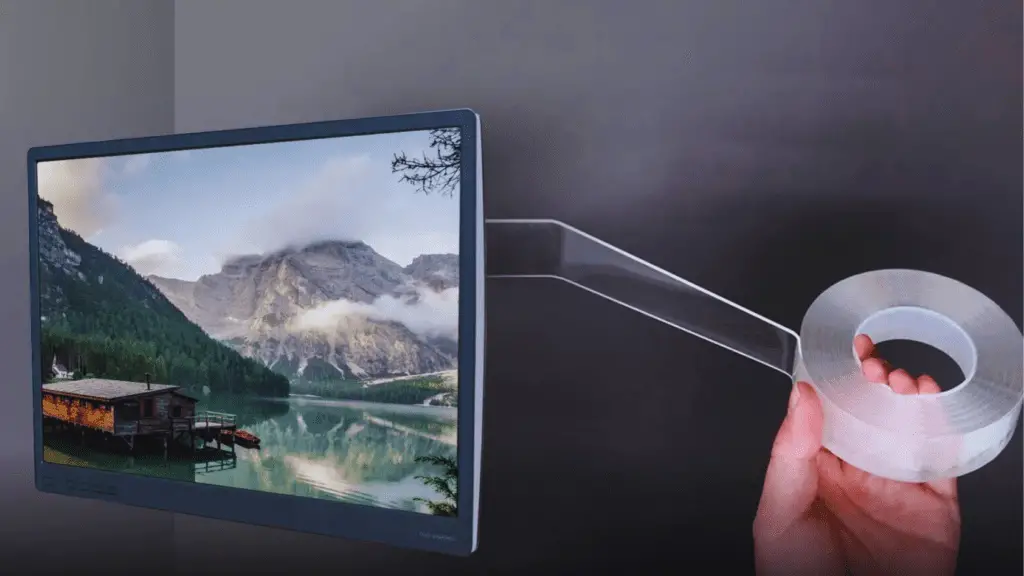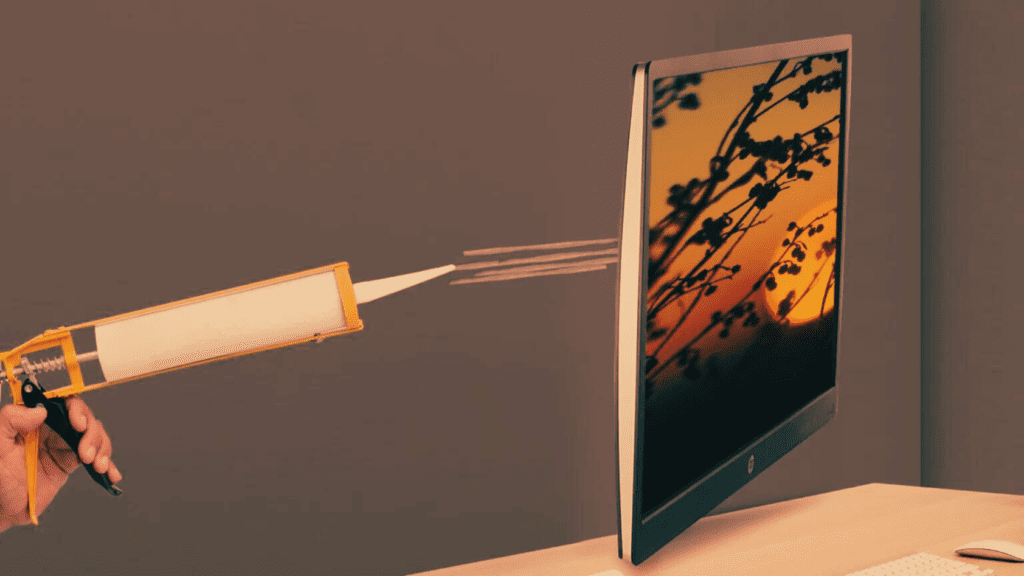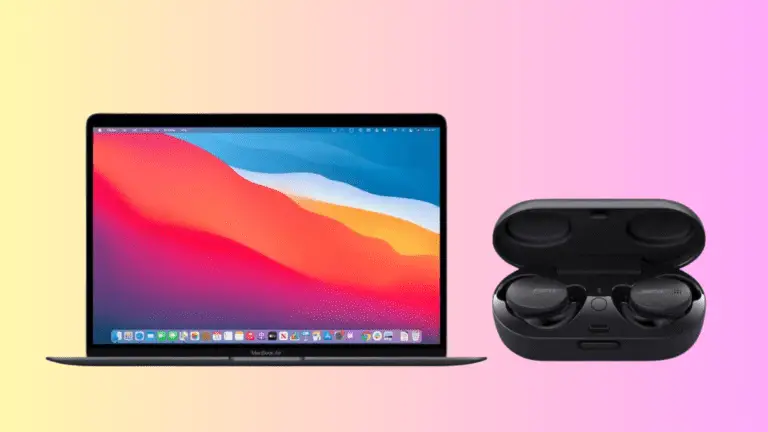While traditional wall mounting of monitors often involves drilling holes and risking damage, individuals in today’s modern workspace are seeking innovative solutions. How to Mount Monitors Without Holes: Learn innovative methods for securely mounting monitors without drilling holes in your walls.
This article explores various methods and techniques for securely mounting monitors without the need for drilling. From adhesive tapes and sealants to specialized hooks and clamps, readers will gain a comprehensive understanding of the available options.
By embracing these creative solutions, individuals can optimize their work environment by freeing up desk space and creating a comfortable viewing experience.
Key Takeaways
- Wall mounting a monitor without holes allows for the best viewing angle and frees up desk space.
- There are several methods available for wall mounting a monitor without drilling, each with its own pros and cons.
- The feasibility of wall mounting a monitor without holes depends on the strength and reliability of the mounting method, as well as the weight of the monitor.
- Two popular methods for wall mounting without holes are using sealant (grab adhesive) or adhesive tape, but caution must be taken with heavier monitors and painted surfaces.
Method 1: Sealant Mounting
One effective method for securely mounting monitors without drilling holes is by using sealant. Sealant offers a strong adhesive bond that ensures stability and prevents the monitor from falling. The benefits of using sealant for wall mounting include the ability to achieve the best viewing angle and free up desk space. Additionally, it avoids the annoyance of noise and dust from drilling, making it a more convenient option.
When choosing the right adhesive tape for mounting, it is important to consider the weight of the monitor. Sealant can hold up to 44 pounds (20 kg), making it suitable for heavier monitors. However, it cannot be used on painted surfaces that may peel, and the integrity of the sealant may deteriorate over time. It is also difficult to gauge when the sealant will give, especially for heavy monitors.
Method 2: Adhesive Tape Mounting

Occasionally, but not recommended for heavy monitors, adhesive tape can be used as a method for securely mounting monitors without drilling holes. However, there are pros and cons to consider when using adhesive tape for mounting monitors:
Pros of using adhesive tape:
- Quick and easy installation process.
- Leaves no damage or marks on the wall surface.
- Suitable for lightweight monitors.
- Cost-effective solution compared to other mounting methods.
Cons of using adhesive tape:
- Less reliable compared to other methods.
- Risk of the monitor falling and breaking.
- Limited weight capacity, not suitable for heavy monitors.
- Requires a clean and smooth wall surface for optimal adhesion.
To ensure the adhesive tape is secure and reliable, follow these tips:
- Clean the wall surface thoroughly before applying the tape.
- Use multiple strips of adhesive tape for better weight distribution.
- Avoid placing the tape near the edges of the monitor to prevent it from peeling off.
- Regularly check the adhesion of the tape and replace if necessary.
Method 3: Adhesive Screw Hooks
Utilizing adhesive screw hooks is a reliable and efficient method for securely mounting monitors without the need for drilling holes. Adhesive screw hooks consist of a plastic hook with an adhesive backing and a screw that can be tightened to hold the monitor in place.
One of the main advantages of using adhesive screw hooks is their ease of installation. They can be easily attached to any smooth surface, such as walls or desks, and can support a considerable amount of weight.
However, it is important to choose the right adhesive screw hooks for your monitor. Consider the weight and size of your monitor to ensure that the adhesive screw hooks can adequately support it. Additionally, make sure to clean the surface thoroughly before applying the adhesive to ensure maximum adhesion.
Method 4: Brick Clamps
When considering alternative methods for securely mounting monitors without the need for drilling, a viable option is using brick clamps to hang the monitor between bricks. Brick clamps provide a sturdy and reliable solution, ensuring the monitor stays in place.
Here are some key points to consider when using brick clamps:
- Alternative materials for brick clamps: Brick clamps are typically made of metal, but there are also plastic options available. Plastic clamps may be more lightweight but may not provide the same level of durability as metal clamps.
- Comparing the durability of different adhesive tapes: When using brick clamps, adhesive tapes are often used to secure the monitor to the clamps. It is important to choose a high-quality adhesive tape that can withstand the weight of the monitor and provide long-lasting adhesion. Comparing different adhesive tapes can help determine which one is most suitable for the specific mounting requirements.
Method 5: Mounting Rails
While not as commonly used as other methods, mounting rails offer a secure and versatile solution for mounting monitors without the need for drilling holes. Mounting rails consist of a horizontal rail that is attached to the wall, and a vertical bracket that holds the monitor securely in place. There are different types of mounting rails available in the market, such as adjustable mounting rails, fixed mounting rails, and sliding mounting rails.
One of the advantages of using mounting rails for wall mounting is that they provide flexibility in positioning the monitor. The height and angle of the monitor can be easily adjusted to achieve the desired viewing position. Additionally, mounting rails are usually made from durable materials such as steel, ensuring the stability and safety of the monitor.
However, there are also some drawbacks to using mounting rails. They may not be suitable for heavy monitors, as they may not be able to support the weight effectively. Additionally, the installation process for mounting rails can be more complicated compared to other methods, requiring precise measurements and alignment.
How To Mount Monitors Without Holes: FAQs

Can I Use the Sealant Method on a Painted Wall?
Using sealant on a painted wall may damage the paint or leave residue behind, so it is not recommended. It is best to choose a different mounting method that does not risk compromising the integrity of the wall.
How Long Does the Sealant Typically Last Before It Needs to Be Replaced?
The longevity of sealant in monitor mounting varies depending on factors such as usage, weight, and environmental conditions. Best practices for maintaining sealant include regular inspections, avoiding excessive weight, and ensuring a clean and properly prepared mounting surface.
Is Adhesive Tape Strong Enough to Hold a Heavy Monitor?
Adhesive tape is not recommended for heavy monitors as it may not provide sufficient strength and reliability. However, there are alternative methods, such as using sealant or adhesive screw hooks, that can securely mount heavier monitors without drilling holes.
Can Adhesive Tape Be Used to Mount a TV Without Drilling Into the Wall?
Adhesive tape can be used as an alternative mounting option for lightweight monitors, but it is not recommended for TVs without drilling. Innovative adhesive solutions provide more secure and reliable methods for mounting monitors without holes.
Are Brick Clamps Suitable for All Types of Brick Walls?
Brick clamps are suitable for most brick walls, but not all. It is crucial to consider the type and condition of the brick. Alternatives to brick clamps for mounting monitors on brick walls include adhesive tape, mounting rails, and adhesive screw hooks.
Conclusion
In conclusion, the modern workspace demands innovative solutions for securely mounting monitors without damaging walls or furniture. Through methods such as sealant mounting, adhesive tape mounting, adhesive screw hooks, brick clamps, and mounting rails, individuals can achieve a sturdy and visually appealing monitor installation.
However, careful consideration must be given to factors like monitor weight, surface compatibility, and long-term reliability. By embracing these innovative solutions, individuals can optimize their work environment, freeing up valuable desk space and creating a comfortable viewing experience.









